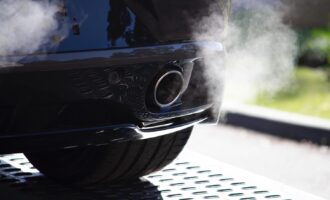Engine oil specifications: China charting its own course
By Aaron Stone
The performance of automotive lubricants has improved markedly over the years, in part, due to the existence and evolution of engine oil specifications. Several widely-accepted engine oil specifications exist throughout the globe. North America observes the American Petroleum Institute’s (API) quality standards; the Brussels-based European Automobile Manufacturers Association (ACEA) defines the equivalent ACEA Oil Sequences for Europe. In Japan, automotive standards, which includes engine oils, are set by the Japanese Automotive Standards Organisation (JASO).
Speaking at F+L Week 2017, Xie Jingchun, deputy chief engineer of Lanzhou Lubricant R&D Institute which is attached to PetroChina Lubricant Company, lamented the absence of a China specific standard, declaring, “this is the biggest issue we face.”
China has adopted the API engine oil category over the past three decades. Referred to as ‘National Standards,’ the diesel engine oil specification is GB11122, and ranges from API CD to CI-4. Xie says these standards will not fully cover the latest Chinese engine manufacturers’ requirements.
In his presentation on the “Technical Routine for China Domestic Heavy-Duty Diesel Engine Oil Specification Development,” Xie says now is the “right time to develop China domestic heavy duty engine oil specification.” The rapid rate of advancement by Chinese heavy-duty engine manufacturers requires an innovative solution to Chinese engine oil specification to support this expeditious growth.
 Further, China has employed an alternative emissions control strategy compared to most American automobile manufacturers. Selective Catalytic Reduction (SCR) is an advanced active emissions control system that injects a liquid-reductant agent into the exhaust stream of diesel vehicles via a special catalyst. Conversely, American manufacturers widely utilise Exhaust Gas Recirculation (EGR) to redistribute a portion of exhaust gas back to the engine cylinders. Xie says the two approaches have a “totally different requirement for engine oil performance.”
Further, China has employed an alternative emissions control strategy compared to most American automobile manufacturers. Selective Catalytic Reduction (SCR) is an advanced active emissions control system that injects a liquid-reductant agent into the exhaust stream of diesel vehicles via a special catalyst. Conversely, American manufacturers widely utilise Exhaust Gas Recirculation (EGR) to redistribute a portion of exhaust gas back to the engine cylinders. Xie says the two approaches have a “totally different requirement for engine oil performance.”
China is now “charting its own course” with the introduction of a ground-breaking domestic heavy-duty diesel engine oil specification. D1 is planned for national release in 2019. Engine test method development is in progress, with the establishment of matrix tests and pass/fail criteria slated to begin in 2018.
Demand from Chinese OEMs for a high quality, high performance, tailor-made engine oil provided impetus for the formation of an alliance to progress a domestic lubricant specification.The inaugural meeting of the alliance occurred on June 24, 2016 in Lanzhou.
The alliance includes the five leading Chinese heavy-duty vehicle manufacturers (FAW, DongFeng, WeiChai, Foton Daimler and JAC) who together make up the dominant market share in the heavy-duty diesel engine segment. Representatives from local lubricant players, the largest being PetroChina and Sinopec, additive companies, as well as Independent organisations, (Chinese Society of Internal Combustion Engines and SAE China) and independent test labs, round out the coalition. Xie believes this partnership is strengthening local automotive-oil industry cross cooperation.
While independent engine oil specifications are a first for China, a number of parallels with the incumbent API category exist. The new standard continues to be based on API, but for the inclusion of four additional China-specific diesel engine test methods. Viscosity classifications and bench tests remain aligned with API. The engine oil performance target is equivalent to API CJ-4, with the exception of an “essential” piston deposit control , TBN retention and long drain interval requirement.
 Xie, who has more than 20 years’ experience with lubricant qualification test standard establishment and operation, provided a brief introduction to the four new engine tests.
Xie, who has more than 20 years’ experience with lubricant qualification test standard establishment and operation, provided a brief introduction to the four new engine tests.
The FAW engine test focuses on high temperature detergency and low oil consumption. A DongFeng engine test aims to measure resistance to viscosity increase and anti-wear performance due to soot contamination.
OEMs in China increasingly demand long drain intervals, up to 100,000 kilometres per oil change. Thus, a screening test that assesses the oil’s ability to perform up to 100,000 kilometres is imperative. The WeiChai WP13L engine oil test will scrutinize total base number (TBN) retention. Higher TBN values are designed to increase the operating period under harsh conditions, before the lubricant requires changing.
The fourth and final China specific test integrated in D1 is the Foton Daimler ISGe4 engine test. OEMs are concerned off-road engine use will encounter poor diesel fuel with high sulphur levels. The trial evaluates the oil’s ability to meet this challenge and maintain normal lubricating condition.
During his address, Xie cited several critical issues to surmount in the development of the category. The most significant, he suggests, is how to reference oil quality assurance and distribution. Establishing processes for the collection, management and analysis of data is also a substantial hurdle, he admits. Other key considerations include lab/stand calibration, “how to crack test severity and precision” between different test levels, and the utilisation of the quality control charting techniques.
echo '






